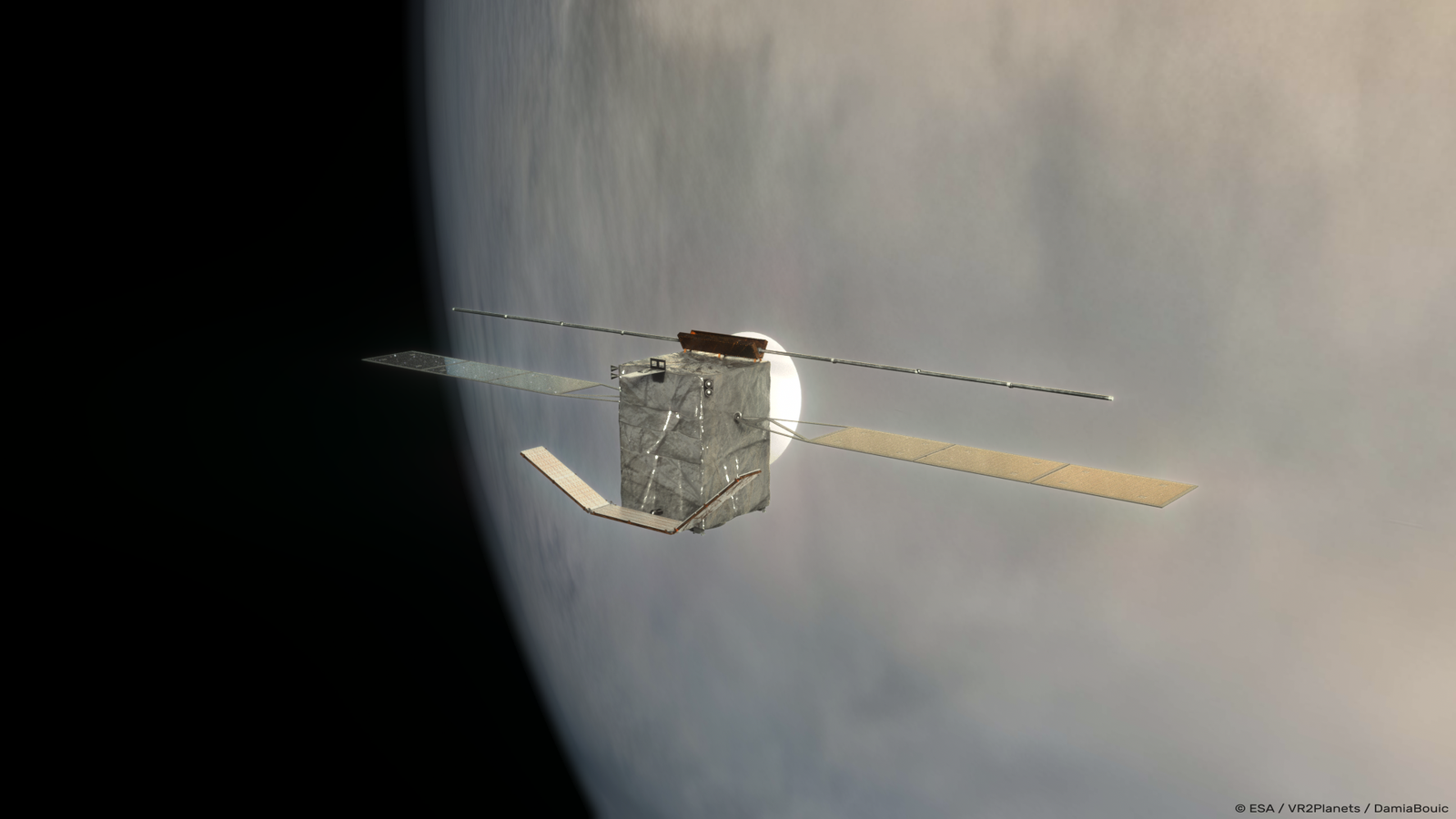EnVision

EnVision is an ESA Venus orbiter mission that will determine the nature and current state of Venus’ geological evolution and its relationship with the atmosphere, to understand how and why Venus and Earth evolved so differently. Perched at the inner edge of the habitable zone, Venus may once have had abundant liquid water and been able to sustain life, before developing the runaway greenhouse warming which rendered it uninhabitable today; thus providing a natural laboratory for understanding planetary conditions for life.
Venus is Earth’s closest sibling geologically: similar in size to the Earth, it has remained active into the present era, unlike the much smaller Mars and Mercury. Venus today does not have a mechanism to sequester atmospheric CO2 in carbonate rocks and does not exhibit Earth-like plate tectonics, although both processes may have occurred in the past. With few sinks for volcanically emitted volatiles, Venus is left with its present massive atmosphere; but again, its past is very poorly constrained. Thus, Venus is essential for understanding the links between planetary geophysical evolution and habitability of terrestrial planets from our own Earth to terrestrial planets and exoplanets everywhere, including those which will be the subject of study by other missions in ESA’s Space Science programme. EnVision therefore appeals to – and benefits from – a wide community ranging from geologists, geophysicists and atmospheric scientists in Earth observation, to astronomers seeking to understand terrestrial exoplanets.
EnVision’s science payload consists of VenSAR, a dual polarisation S-band radar also operating as microwave radiometer, three spectrometers VenSpec-M, VenSpec-U and VenSpec-H designed to observe the surface and atmosphere of Venus, and the Subsurface Radar Sounder (SRS), a High Frequency (HF) sounding radar to probe the subsurface. These are complemented by a radio science investigation which achieves gravity mapping and radio occultations of the atmosphere, for a comprehensive investigation of the Venusian surface, interior and atmosphere and their interactions. Far more than a simple radar mission, this suite of investigations works together to comprehensively assess surface and subsurface geological processes, interior geophysics and geodynamics, and atmospheric pathways of key volcanogenic gases, which together illuminate how and why Venus turned out so differently to Earth.
Hardware Participation of the DLR Institute of Planetary Research
- VenSpec-M (Venus Emissivity Mapper)
PI: Jörn Helbert - VenSpec-CCU (Central Control Unit)
Scientific Participation of the DLR Institute of Planetary Research
- VenSpec-M (Venus Emissivity Mapper)
- Coordinator for the VenSpec Consortium
Further DLR Participation
Institut für Optische Sensorsysteme
